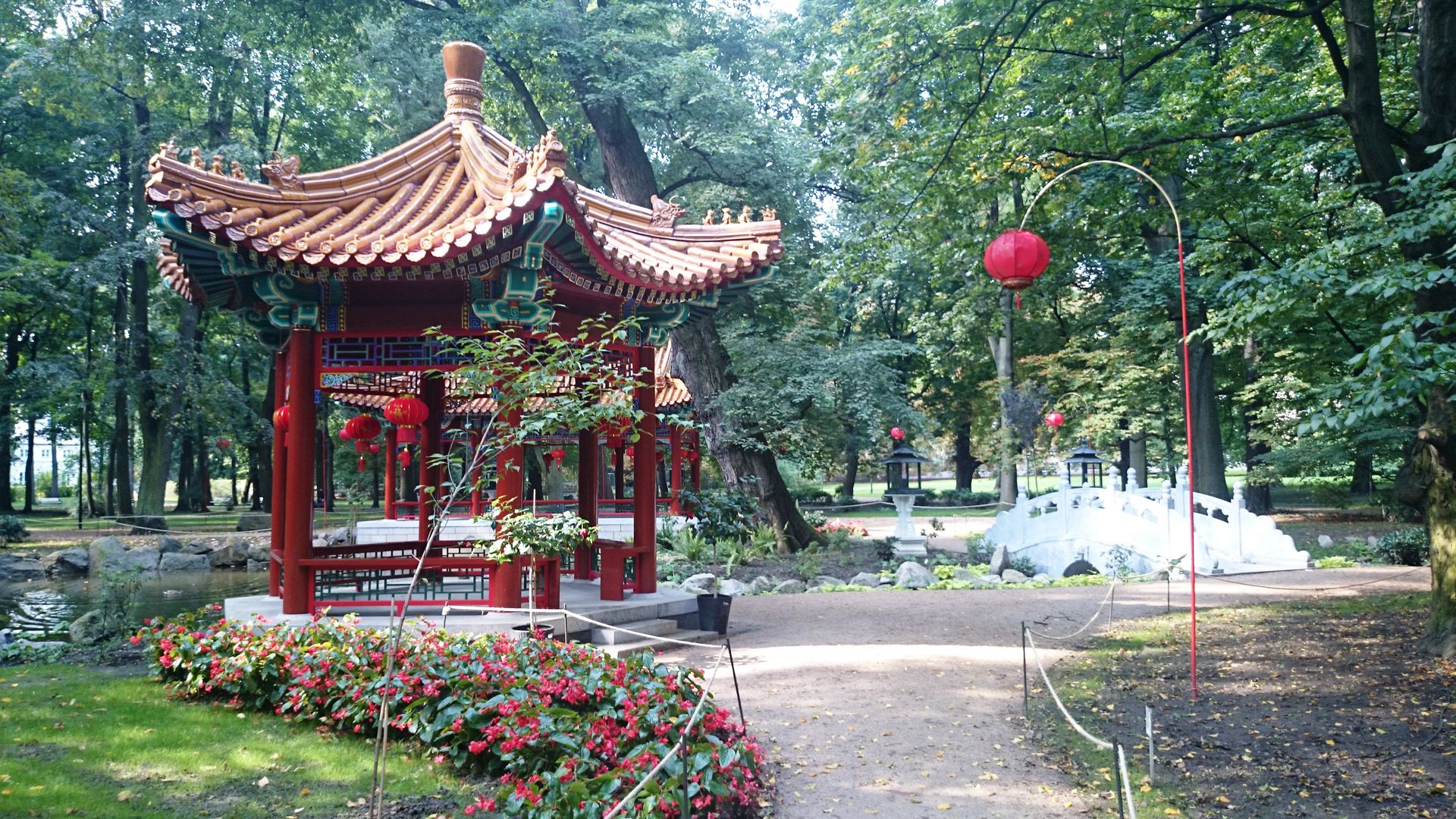Chinese Garden in Royal Łazienki Park
6.06

Overview
The Chinese Garden in Warsaw's Royal Łazienki Park is a unique example of a garden in the chinoiserie style, located in the northern part of the park, between Chinese Avenue and Belvedere Road. The garden surrounds a small pond and features architectural elements such as the rectangular Chinese Pavilion and the lattice Chinese Gazebo, which symbolize masculinity and femininity, as well as a stone bridge representing the Milky Way. The entrance to the garden is guarded by two stone lions, a gift from the Prince Gong's Mansion Museum in Beijing, symbolizing prosperity. The garden was created as part of cultural and architectural projects inspired by Chinese orientalism, which fascinated King Stanisław August. In the 18th century, many structures in this style were built in Łazienki, including the Chinese Bridge and Chinese Gate. After their demolition in the 19th century, the remains of the bridge's foundations were discovered in 2012, leading to the initiation of a new concept for the Chinese Garden, designed by Prof. Edward Bartman and architect Paweł Bartman. Construction, funded by KGHM and China Minmetals, in collaboration with the Prince Gong's Mansion Museum, began in the spring of 2014, and the garden was opened on August 2, 2014, coinciding with the Chinese Qixi Festival (Chinese Valentine's Day). The garden not only attracts architecture and gardening enthusiasts but has also become an important cultural venue. Since 2012, summer lantern festivals have been held there, and in 2014, the exhibition "Chinoiserie in the Royal Łazienki" was organized, showcasing Chinese elements of art and culture. The Chinese Garden combines fascinating architectural aspects, a rich historical context, and diverse cultural events, attracting both locals and tourists.
Location
Tickets
Powered by GetYourGuide
2025 Wizytor | All Rights Reserved